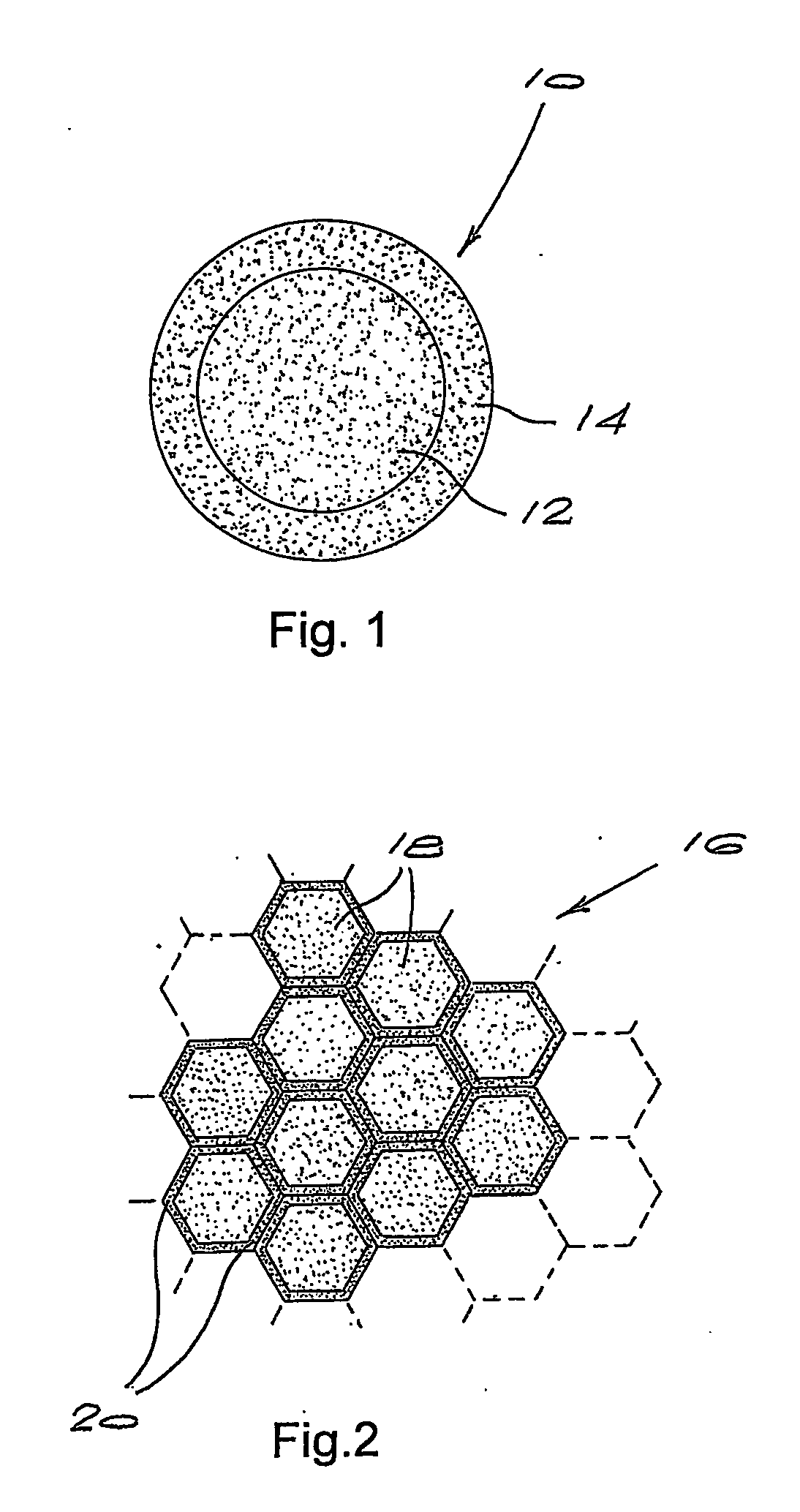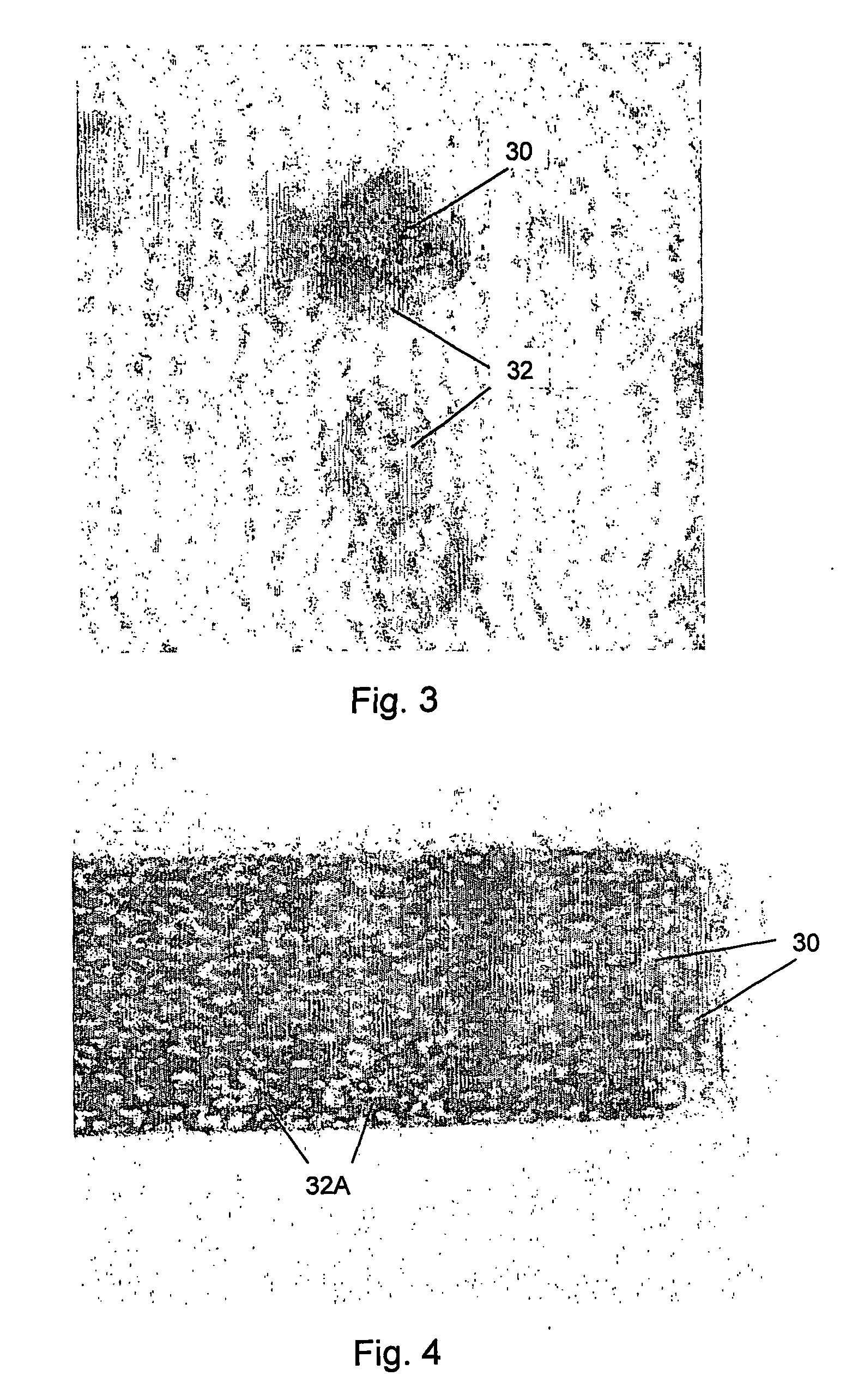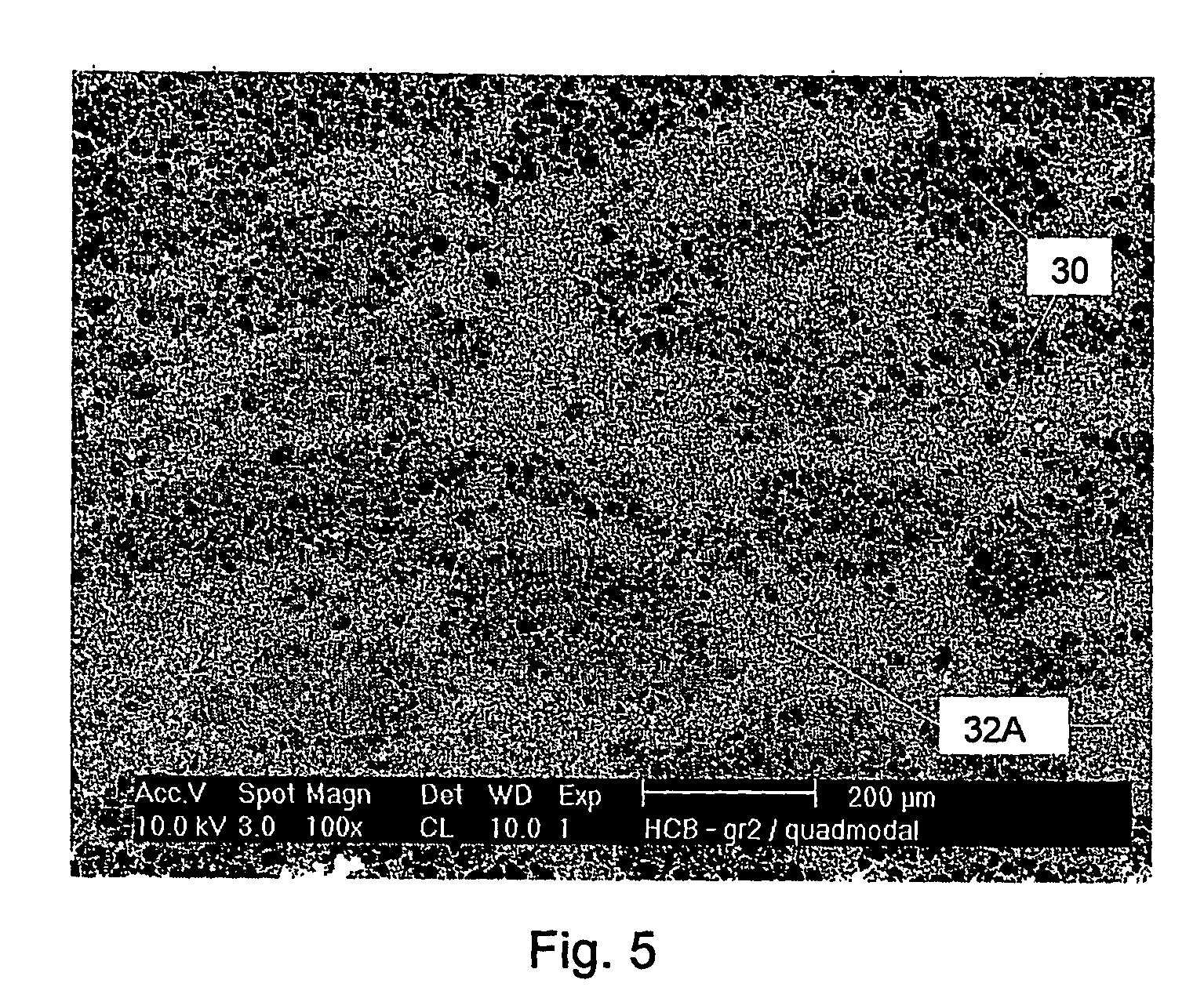Composite material for drilling applications
a technology of composite materials and drilling applications, applied in the field of composite materials, can solve the problems of low cutting stress, reduced cutting efficiency, and inability to cost-effectively solve the effect of reducing the cost of drilling
- Summary
- Abstract
- Description
- Claims
- Application Information
AI Technical Summary
Benefits of technology
Problems solved by technology
Method used
Image
Examples
example 1
[0052] A solvent based slurry of coarse diamond powder was prepared with approximately 4 wt % organic binder. The slurry was dried and crushed with pestle and mortar to produce green diamond particles screened to about 200 to 300 microns in size. The granules were placed into a pan granulator and rolled while small additions of a fine diamond powder with an organic binder were added to effect coating. Volume % of diamond granules to diamond coating was in the ratio of 1:1. The coated diamond particles are depicted in FIG. 3, where 30 is a coarse diamond granule and 32 the diamond coating. The coated green granules were placed into a reaction cell and covered with a WC-13% Co substrate. The arrangement produced a unit with a PCD layer consisting of sintered diamond granules in a matrix of another sintered diamond type. Binder removal was done in air at 400° C. for 2 hours. The pre-outgassed units were then outgassed in vacuum at 1100° C. for 25 minutes, and loaded into a reaction cap...
example 2
[0053] In example 1, diamond granule shape was uncontrolled leading to irregular shaped granules. As granules can be of any shape, diamond granules of example 2 were made spherical before coating with diamond powder. The spherical shape was achieved by rolling irregular shaped granules in a granulator with additions of diamond powder to coat. The granules were then sieved to achieve 200 to 300 micron sized pellets. These granules were then coated with another diamond powder type. A compact was pressed as in example 1. Whilst not tested, it is expected that such a compact would compare favourably with the compact of example 1.
example 3
[0054] The same procedure as in example 1 was followed except that the granules were admixed and not coated. Granules from coarse grained powder were admixed in a fine grained diamond powder. A compact was pressed as in example 1. In a conventional Paarl granite test, the material tested developed a wear scar of about 0.325 mm, which once again exhibits a very good wear resistance for the PCD material.
PUM
| Property | Measurement | Unit |
|---|---|---|
| Grain size | aaaaa | aaaaa |
| Grain size | aaaaa | aaaaa |
| Particle size | aaaaa | aaaaa |
Abstract
Description
Claims
Application Information
 Login to View More
Login to View More - R&D
- Intellectual Property
- Life Sciences
- Materials
- Tech Scout
- Unparalleled Data Quality
- Higher Quality Content
- 60% Fewer Hallucinations
Browse by: Latest US Patents, China's latest patents, Technical Efficacy Thesaurus, Application Domain, Technology Topic, Popular Technical Reports.
© 2025 PatSnap. All rights reserved.Legal|Privacy policy|Modern Slavery Act Transparency Statement|Sitemap|About US| Contact US: help@patsnap.com



